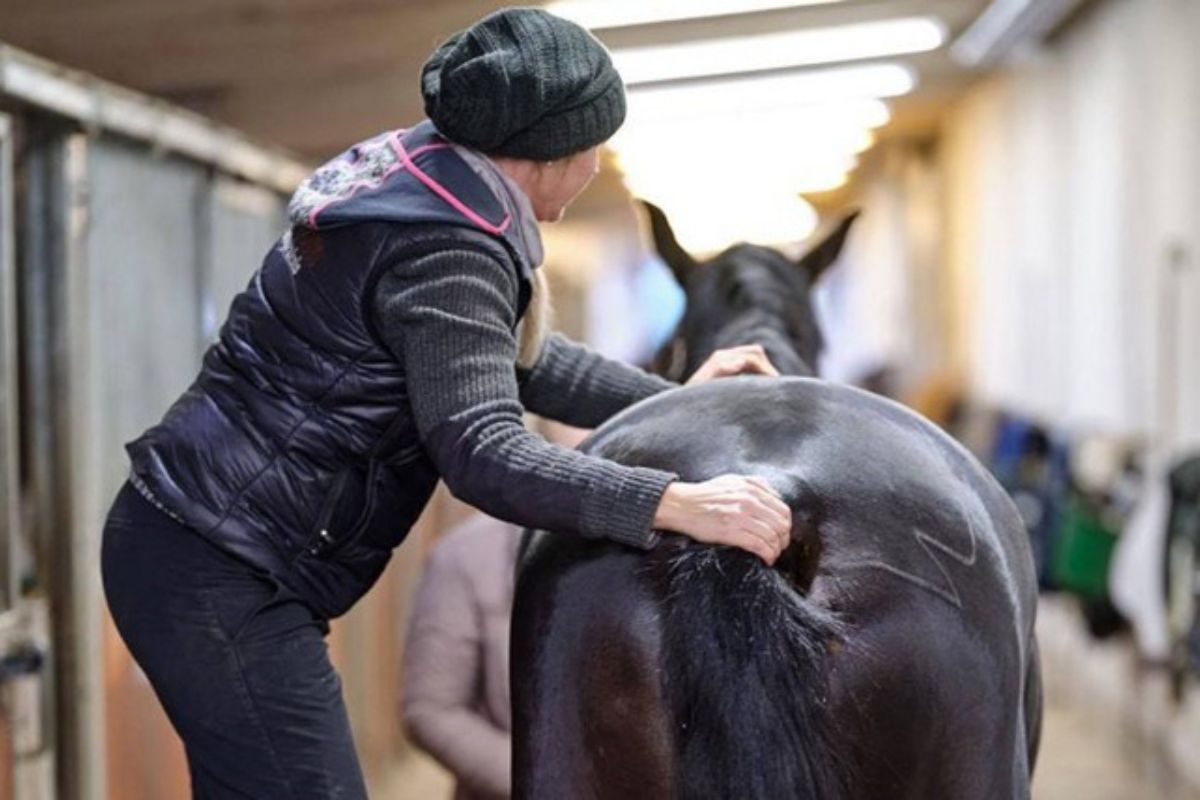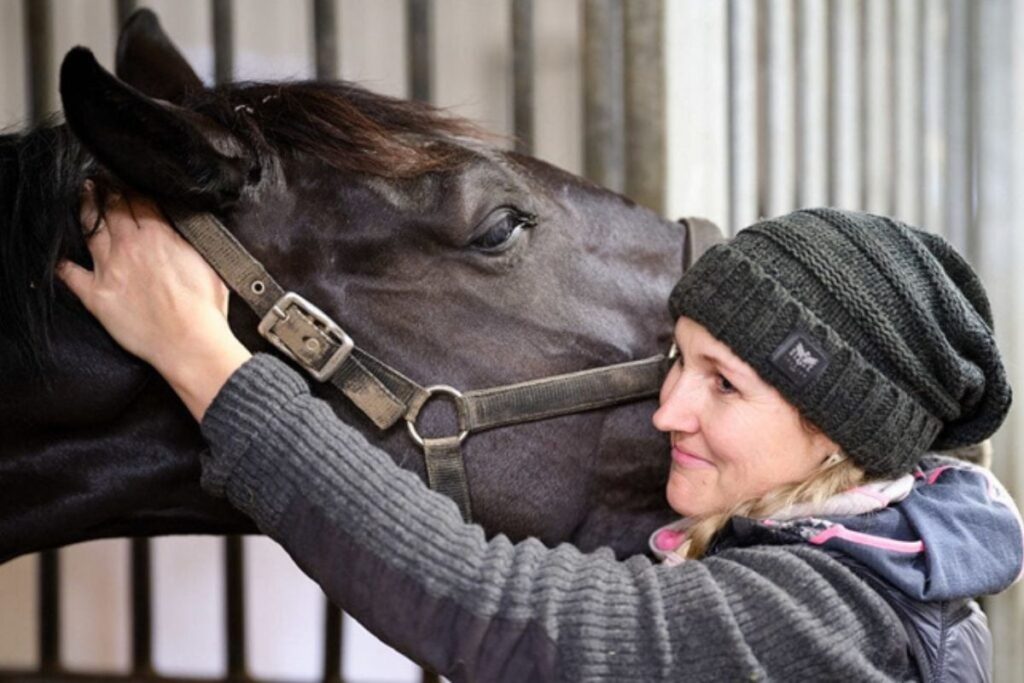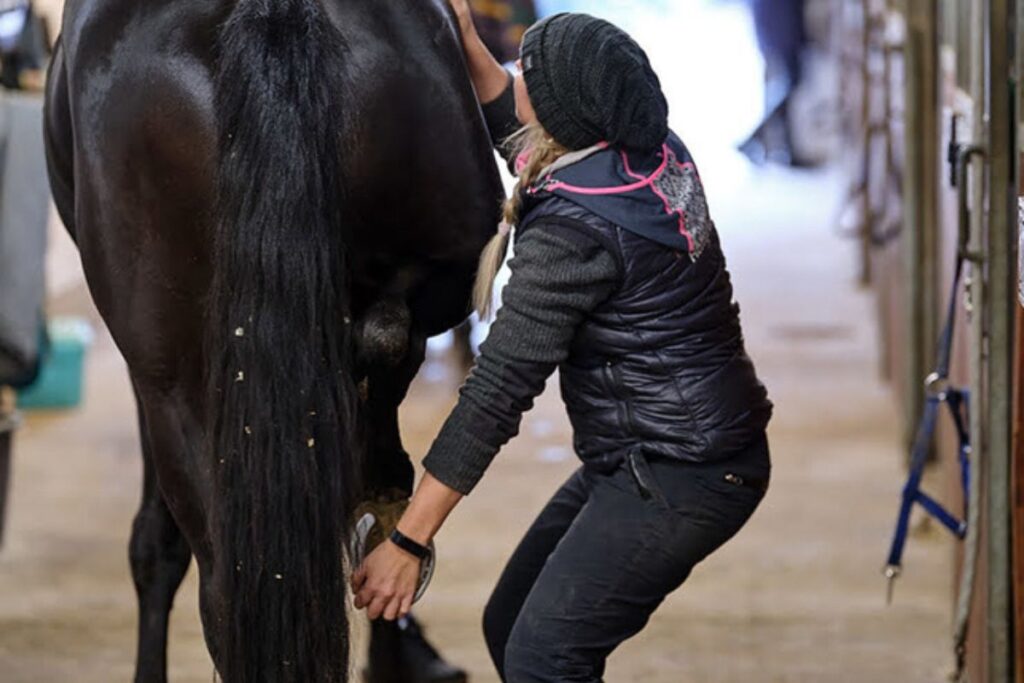Menu

Treating the symptoms or finding the cause? Your horse cannot tell you in words if something hurts. Instead, it will try to show it with its actions. Some horses become reluctant to be ridden, while others become introverted or quite the opposite - violently extroverted if they experience discomfort or pain in the body. We want to help our horses by finding the underlying problem - the actual trigger. We have asked Bettina Købke, who is a veterinarian, osteopath, chiropractor and rider.
Owns and works at Rebalance Vet by veterinarian Bettina Købke, where she treats both horses and dogs. When horses become reluctant about doing something they usually would do with joy or at least without resistance, there is always a good reason behind it, according to Bettina Købke. And that's what she's focusing on in her work: the trigger and all the challenges it brings. Instead of only looking af the symptoms. Because the horse's body connects from muzzle to hoof
According to Bettina Købke when a horse is challenged it is not enough to look at the obvious problem and deal with it exclusively. We should not just look at the symptoms. It would be like taking a pill for a headache or muscle pain. The problem will disappear for a short period, but the problem is still there.
"If you do not get to look at and solve all the challenges in the body that the original problem has triggered, the symptoms will just return. Everything in the body connects and you cannot just solve part of the problem and expect the whole problem to disappear. You have to look at the whole,” Bettina Købke emphasizes.

You may also like to read: A good posture is important for the horse – even when we are not riding
Bettina tells the story about a client, whose horse just started acting out. In fact, it had probably been doing it for a while - even before the current owner bought it. This is a young mare of 4 years, which often would just stop during training. The former rider got the impression that the horse was sensitive and reacted to the fact that the footing in the arena was wrong. So, the rider straightened the footing and rode on. The horse had also gained a reputation for being lazy, because it often walked slowly and lacked propulsion.
When the current owner took over, it did not take long before she wanted to investigate the matter further. She sensed that something was not right. The horse was nice, and let her sit on its back, but it stopped all the time and would not go forward. When it finally advanced, it proceeded at an unusual slow pace. And even in the lunge without rider it went really slow, and its back was completely still. No bounce or movement.
The owner chose to let her vet examine the horse, do a bend test and x-ray its back. Everything was fine. The owner, who is a therapist herself, had also treated the horse several times, but each time the tension returned. Especially around the loins. It was the fact that the symptoms kept coming back, especially around the loins, that made the owner contact Bettina Købke. The owner had the feeling that the challenge was somewhat deeper than where her hands could reach.
At Bettina's osteopathic examination, the horse was indeed very locked in the loins.
A lumbar locking will automatically affect all the nerves that originate in this area to react hypersensitively. And it can thereby affect the circulation of the organs connected to these nerves. This means that the blood will easily accumulate in the organ wall. The organ becomes a little heavier than normal and pulls on the connective tissue that surrounds it,” Bettina explains.
To confirm the suspicion surrounding the symptoms and therefore the possible challenge, the mare was rectally examined (examined internally) under anesthesia. Here Bettina could feel a clear change in the abdomen. The uterus, which is usually located in the middle of the pelvis, was pulled over to the right.
"The connective tissue had become so tight that it had lifted the uterus away from its normal place. So it almost goes without saying that it was tight and very painful - especially during movement."
The mare was treated for the challenges around the abdomen rectally, and the rest of the horse was treated osteopathically.
At the check-up a month later, there was a huge difference. It had recovered completely, had gained significantly more momentum. It also showed a completely different movement in the back and lower back. And it had stopped slowing down when it was ridden. So no more symptoms, instead a treatment of the trigger.

It is not always clear as a bell when it comes to treating horses. For one, they cannot tell in words where it hurts or where the problem is.
There can be many possible causes for a problem. The horse in the case of the lumbar problems could have sand in the intestines, stomach ulcers, locks or maybe kissing spine. It often takes a lot of detective work to find the original challenge. And a lot of compensation on behalf of the horse often accumulates, which can make it harder to find the trigger.
A full examination can sometimes include X-rays, binocular examinations, scanning and physical examination of the body. But you can get really far if you have sufficient knowledge about the anatomical connections in the body.
Bettina describes how nerve pathways run along the spine and down to the organs. And how – with that in mind - it makes sense to look at which parts of the body are connected.
"The horse in this case had challenges in the abdomen. It was very locked in the lumbar region. Which makes sense because the first three lumbar vertebrae have nerve connections to the ovaries. I could not have helped the horse in the same way if I had only treated the lower back chiropractically,” Bettina ezplains.
If, on the other hand, a gelding has repeated locks around 2.-3. lumbar vertebra, according to Bettina it is relevant to look at the sperm strands. Here there are also nerve connections.
"3-5. lumbar vertebrae, on the other hand, have a nerve connection to the bladder. And so on, and so on."
"It is really about knowing the anatomy and the connections in the body to help the horse optimally. You can go a long way with that. Everything is perfectly straightforward when we talk anatomy, and for me it does not make sense to work in any other way,” Bettina says.
When looking for professional help for your horse, Bettina Købke's best advice is to be critical and spend some time on research. There is a wide selection of veterinarians, dentists, farriers, therapists and other equine professionals with very different backgrounds and educations.
“In general it is relevant to look at where a professional is educated. And whether it is an education that has required some form of examination. Use a professional trained to see the whole from an anatomical perspective. Preferably one who is willing to work with other professionals. This will bring the best results for your horse,” Bettina concludes.